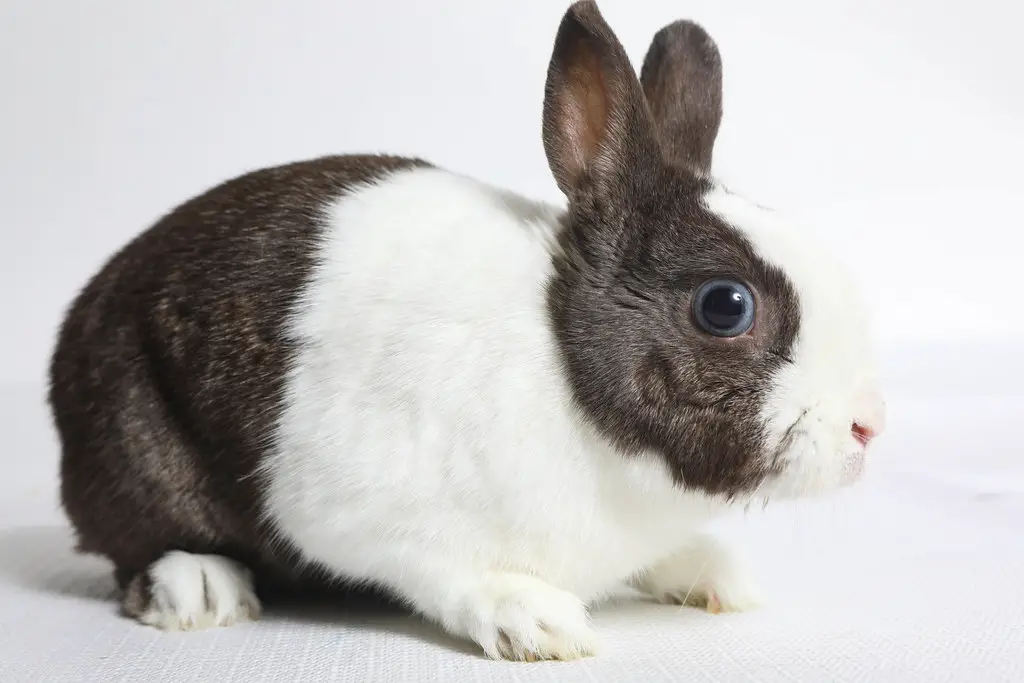Basic Appearance:
Dutch are very flashy little rabbits, with distinctive white-blazed faces and two-toned bodies. Dutch are one of the most easily recognized and popular rabbits, and it’s easy to see why. They are small and compact, making them easy to handle, even for children. Dutch have short, glossy fur.
History, Temperament, and Common Uses:
The Dutch rabbit breed originated in the Netherlands. Very early in their development the rabbits with Dutch markings were called Petite Brabicons. When they came to England they were called Hollanders. Later they came to be known as Dutch, the name we all recognize.
Dutch are generally friendly, gentle, and hardy. Because of their small size and social temperament, they are an excellent choice for children.
Dutch are commonly used for showing, and make challenging show rabbits because of their unique markings. They are also fine boned, and have a high dress out percentage. To sum up, the Dutch is a very versatile breed that used for showing, pets, and even meat.
Grooming, Care, and Additional Notes:
Dutch have flyback coats, which are very easy to care for. When not in a molt, a once or twice a week grooming is quite sufficient to keep you Dutch looking their best. Simply go over their coats with damp hands or a damp cloth to remove loose hairs. When rabbits are molting, they will need more care to keep the fur from flying. A slicker brush is helpful for removing loose fur. As with all rabbits, Dutch do not need a full bath. Simply spot-clean the coat as needed.
Dutch rabbits are generally hardy and fairly easy breeders.
Dutch At A Glance:
Recognized Varieties:
Black, blue, chocolate, gray, steel, and tortoise.
ARBA Body Type:
Compact
Approximate Size:
3 1/2 to 5 1/2 pounds
Important Things to Look for When Buying Show Stock:
It is a good idea to keep the saying “think in thirds and circles” in mind when judging markings on a Dutch. They should have round cheek markings on either side of the head. The saddle and undercut combine to make a strait, clear dividing line between the white and colored portions of the body. It should start just behind the shoulders, making the front third of the rabbit white and the rear two-thirds colored. The hind feet are also in thirds. The front third, from the toes back, should be white.
When looking over your Dutch, don’t forget about type. They should be well rounded and smooth, from shoulders to full hindquarters. Dutch should be close coupled and have a slight taper from the hips to the narrower shoulders.
Dutch fur should be dense, short, and flyback, with a lustrous appearance.
Things to Avoid:
Dutch have many faults and disqualifications related to markings. See a current Standard for the complete list. Uneven or rough edged markings are faults, as are “drags” of color into the white areas, and “runs” of white into the colored areas. Dutch will be disqualified for “tied” front legs. This means rabbits with belly color that extends past the elbows. “Split stops” are when a Dutch’s foot markings, called stops, are not perfect circles around the rabbit’s feet. Any colored or white spots or bare patches are disqualifications.
Dutch should not have protruding hips that spoil the rounded appearance, or pinched, narrow hindquarters.

